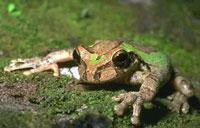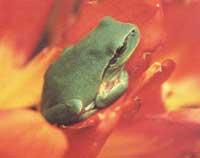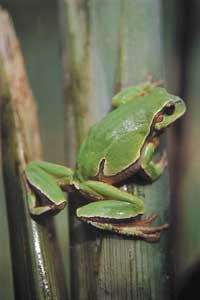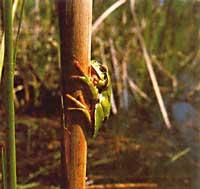International amphibian conservation days
2002/02/18 Imaz Amiano, Eneko - Elhuyar Zientziaren Komunikazioa

We are used to recognizing that the cause of such problems is habitat loss or deterioration. An example of this is the southern frog of Mendizorrotz (Hyla meridionalis), located on the Basque coast. But it is more rare to hear that populations have fallen even in protected areas or where there is no significant pollution. And that's what seems to happen to amphibians.
To discuss all this, the Aranzadi Science Society recently held an International Amphibian Conservation Conference in San Sebastian. As usually happens in these cases, they have not found a definitive miraculous solution, but researchers from different places have explained what they consist of, transmitting experiences and knowing new lines of work that can serve each one.
Among other things, he realized the influence of parasites on amphibians and how it is very likely that in many populations the researchers themselves, through the material and clothing used, have introduced new parasites (specifically what happens with chitridia mushrooms).
It has also been mentioned the warming of the climate to explain, on the one hand, that amplexos and amphibians are getting faster and faster, but also the influence of temperature change on the durability of wells, on the temperature of water, etc.

Another field that is being researched fairly in recent years is the influence of ultraviolet light radiation on amphibians. Increased radiation affects the health of animals of unprotected species, especially eggs.
These three factors may be, among others, some of the problems of amphibians in well-preserved areas, but conventional pollution, acid rain and habitat loss have also been studied. In the latter part the problem of the southern frog in Gipuzkoa has been located and the work carried out and ongoing to ensure the sustainability of the species has been made known.
However, the importance of the time scale in amphibian studies has also been pointed out, that is, in those generally rather complex amphibian cycles, the need for 10-15-20 years of follow-up has been highlighted rather than for 2-3 year populations, especially in changing climate zones.
In addition to the talks, round tables and an exit to the mountain were held.

Gai honi buruzko eduki gehiago
Elhuyarrek garatutako teknologia






